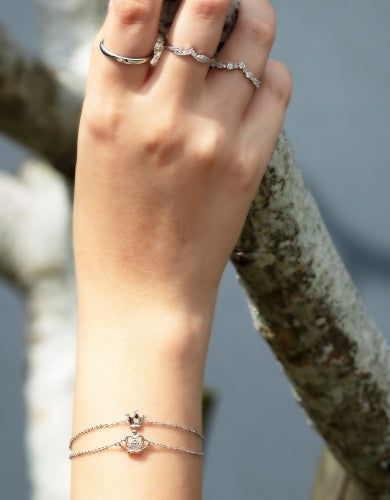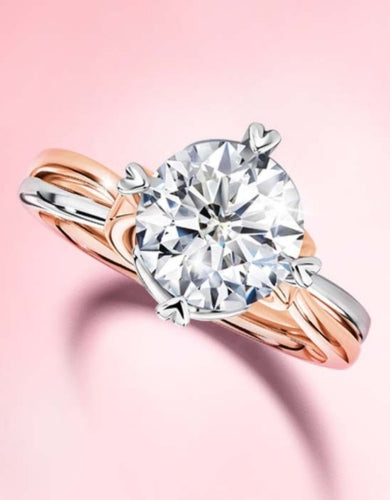Since the birth of lab-grown diamonds, the sparkling rise of these stunning beauties quickly became rampant due to the eco-conscious mindset of Millennial consumers - along with the subset of Gen Z-ers. The mere truth surrounding lab-created diamonds stems from the fact that young individuals are seemingly falling in love with lab diamonds because of the humanitarian and environmental cost reduction. There are so many frequently asked questions surrounding them. But to put it simply, what exactly are lab-made diamonds, and are they truly a more environmentally friendly alternative to traditionally mined diamonds?

To begin with, a lab-grown diamond is a diamond: it is physically, chemically, and visually identical to a mined diamond. Diamonds are formed naturally amid the crushing pressure and tremendous heat of the Earth's mantle, roughly 100 miles deep. Most were produced between 1 billion and 3 billion years ago when our planet was much hotter than it is now. On the other hand, lab-created diamonds are birthed through chemical processes - chemical vapor deposition (CVD) and high pressure high temperature (HPHT).
Environmental credentials
In recent years, the technology underlying lab diamonds has made significant breakthroughs, allowing firms to manufacture higher grade diamonds more quickly and inexpensively. It has resulted in an increased rivalry between firms producing lab diamonds and those producing mined diamonds. It is no longer a secret: lab-created diamonds are a business trend growing swiftly. According to the AWDC analysis, young diamond purchasers are lured to them due to their pricing, transparency, and environmental concerns, with this section of the market growing at a rate of between 15 per cent and 20 per cent each year. The trend is projected to continue as more jewellers begin to offer lab diamonds and more laboratories open their doors. According to data published by Diamond Foundry, the total environmental impact of mined diamonds is substantially larger than that of lab diamonds.
Aboveground diamond formation demands far less energy and water

Following conventional knowledge, making a diamond aboveground would suggest that it requires far more energy than removing a subterranean diamond produced by the Earth. However, it turns out that extracting a subterranean diamond from Earth requires an entire factor of more energy than creating one aboveground in a lab. Furthermore, the energy utilised in mining is often polluted Diesel, as opposed to renewable energy in aboveground manufacturing.
The amount of energy needed for underground mining is rather surprising; it proves a testament to how far aboveground diamond production technology has evolved throughout the years, and how inefficient underground mining tends to be - requiring vast amounts of soil to be moved in often remote areas.
The rise of lab diamonds

The truth prevails: diamonds are everlasting. In today's world, these eternally gleaming stones are challenged by their counterparts; the lab-grown diamonds. The diamond market is now suffering from a massive shortfall. In a report in 2019 by Bain & Company and the Antwerp World Diamond Center, sales of rough mined diamonds are predicted to fall by 25 per cent, while demand for polished diamonds is expected to climb by 10 per cent.
With the globe heading toward more sustainable growth, Millennials are particularly fond of lab-grown diamonds. As per MVI Marketing, 70 per cent of Millennials are abandoning traditional diamonds in favour of lab-grown equivalents. This is why Bain & Company expects the lab-grown diamond industry to increase at a rate of 15 to 20 per cent, with the potential for unparalleled growth. The development of lab-grown diamonds has even compelled companies like De Beers to adopt them. In May 2018, the firm debuted its lab-grown Lightbox Jewellery collection.
Environmental benefits of choosing lab-grown diamonds

Lab-grown diamonds are not only incorporated in jewellery, such as affordable engagement rings, but also in a variety of other applications ranging from abrasives to medicinal, scientific, and computing applications. Millennials are shaping the lab-grown diamond industry, with the rising trend of opting for a lab-grown engagement ring due to its conflict-free origin, sustainability, and affordability, in comparison to their mined counterparts. But above all, let us discuss the environmental benefits it brings by Millennials choosing lab-grown diamonds.

Apart from demanding far less energy and water, many can be said about lab-created diamonds – making them all the more a better solution for the environment. Frost & Sullivan, worldwide research and consulting organisation, conducted a detailed environmental impact study for both mined and lab-grown diamonds and released a comparison of the environmental and social effects of natural vs synthetic diamonds, as seen in the photo above. For the study, many environmental criteria such as land disturbed, energy usage, water usage, air emissions, and so on were taken into account. These figures clearly illustrate that the total effect of mined diamonds is more than seven times that of lab-grown diamonds. If anything, all of these data show that synthetic diamonds are a viable, long-term option for customers, albeit this cannot be generalised.
Conclusion
While consumer knowledge and the demand for lab diamonds have grown significantly in recent years, numerous individuals feel that the most pressing obstacle remains education, with some contributors commenting that the industry is riddled with misleading information. Jeweller and CEO of Lightbox Jewelry, Steve Coe, says that many customers are still somewhat uninformed of what a lab-grown diamond is. Thus, there is undoubtedly still a need to provide information and education to consumers. Additionally, he added that though lab diamonds have the same optical, material, and physical properties as mined diamonds, the excellent value proposition for Lightbox lab-grown diamonds is that they provide customers exceptional outstanding quality at a very competitive price, allowing the buyer to make informed decisions.
At Love & Co. Malaysia, we embrace the rise of aboveground diamonds and all they have to offer - that is why our LVC Precieux collection is destined for the Millennial and Gen Z looking for affordable, sustainable, and equally breathtaking jewellery. Whether white gold or rose gold wedding rings, we have one for every conscious couple seeking guilt-free diamond rings. To get started on your journey to donning guilt-free jewellery, book an in-store consultation with our professional consultants to find the right fit for you and your significant other!




















